The Glozel Case Is A Symbol Of Disgrace Lies And Shame – Archaeological Scandal Of The Century
A. Sutherland - AncientPages.com - Today's article is about one, especially puzzling and bizarre archaeological mystery - the Glozel writings. It is about a grave academic mistake, scholars' hostile circle of rivalry, the battle for reputations, well-established theories, disgrace, and lies.
One of the greatest archaeological scandals has its roots at Glozel, a small village near Vichy in southern France.
The Glozel writings were much disputed and finally rejected by the critics. The main reason for their rejection is that the writings - if genuine - indicate the use of a written alphabet thousands of years before man was supposed to have come up with an idea of such thing as the alphabet.
The scandal involved some of the best archaeological experts, divided into two debating groups either proclaiming that the artifacts found at Glozel were of revolutionary significance to the study of human prehistory or were nothing more than complete fakes.
What happened at Glozel on March 1, 1924?
On March 1, 1924, a young French farm worker Emile Fradin, was plowing the field with some oxen when one of them stepped into a shallow underground chamber, approximately three meters in length and 50 centimeters deep.
The chamber was lined with glass-covered stones and tiles, glazed as though by intense heat and resembled a medieval glass kiln or a primitive glassworks.
On the tiled floor, there were old clay pots, a polished stone ax-head, and several other curious vessels that look like skulls clad in space helmets. One of them has even been called "the space traveler".
Finally, Fradin's grandson also pulled out mysterious clay tablets covered with characters that neither of them could decipher, but which contained letters similar to ours like for example C, H, I, J, K, L, O, T, V, W, and X.
Tests have shown that some of the artifacts are about 2,000 years old, but others are still indisputably very ancient and, moreover, of completely unknown origin!
Why have all artifacts been gathered in one very specific place?
There were many who visited Fradin's place during the first four months after the discovery. A local schoolteacher from the neighboring village, M. Clement, for example, appeared unexpectedly with a man, who presented himself as Viple. Both visitors broke down the remaining walls in the underground chamber and took them away.
Some weeks later, it was announced that the place was of Gallo-Roman origin. Later, M. Clement claimed that he showed the young Emile Fradin illustrated archaeological books before any inscribed tablet was found.
Unfortunately, many who later came to Glozel's excavation site seem to have taken Clement at his word...
In January 1925, a Vichy physician and amateur archaeologist, Dr. Albert Morlet decided to visit Fradin's farm. Morlet was only an "amateur specialist" in the Gallo-Roman period (1st to 5th century AD).
Unfortunately, amateur researchers have never been taken very seriously by the scientific community.
Morlet believed that the objects from Glozel were older and offered the Fradins 200 francs per year to be allowed to continue with the excavation.
Morlet discovered tablets, idols, bone and flint tools, and engraved stones. He identified the site as Neolithic and announced that this was a prehistoric site, and the objects were at least 12,000-15,000 years old.
And so a furious battle began...
Professor Dorothy Garrod, the English member of the Glozel Commission of 1927, for example, said that after the schoolteacher Clement's arrival Fradin "began to produce strange things which didn't fit in at all with what have been found before..." Her statement was not true and Clement's statement definitely conflicted with contemporary evidence. M. Clement did not appear on the scene until four months later in July 1924. More than forty visitors to the site later went on record in different journals and court depositions stating that first tablets covered with the mysterious writing were [already] among the first, genuine discoveries.
These were the facts; however, no one bothered with the facts. Instead, Emile Fradin was accused of producing fake artifacts under tuition.
Dorothy Garrod continued to spread her lies, the distinguished director of the French Museum of National Antiquities, Dr. Salomon Reinach, who believed the finds of Glozel dated to c. 4000 BC., personally encouraged Emile Fradin's interest and sent him books and documents, having "the effect of launching him on a career of organized forgery".
That was not true either, but apparently, some archaeological reputations were at stake and it was time to defend them using any means necessary.
In 1927, Glozel Commission, consisting of eight prominent archaeologists chosen by the Bureau of the International Institute of Anthropology, unanimously concluded that more than 3,000 artifacts - unearthed in the first two years - were forgeries. Also five years later, archaeologists continuously claimed that the Glozel artifacts were fakes, though all the evidence had revealed that this was definitely not the case.
The Glozel discovery brought chaos to the establishment of the antiquity of humankind. Moreover, it didn't fit the accepted scientific explanation of human prehistory in that region and the whole Europe as well.
In 1975, Professor Colin Renfrew of Southampton University and one of the enthusiastic critics of the Glozel site said that there is something about Glozel, which is "not quite right". Renfrew was namely challenged with evidence obtained by carbon and thermoluminescence (TL) dating that had shown that some of the Glozel invaluable findings were centuries old and others were thousands of years old!
They were not forgeries created by Emile Fradin and so Renfrew made a statement:
"The three papers, taken together, suggest strongly that the pottery and terracotta objects from Glozel, including the inscribed tablets, should be regarded as genuine, and with them, presumably, the remainder of the material... I still find it beyond my powers of imagination to take Glozel entirely seriously."
From the beginning, there were many archaeological problems with the Glozel' site - one of the greatest archaeological discoveries of revolutionary meaning.
Glozel was never competently excavated because many scholars, in fact, wanted to forget Glozel, to erase its existence.
"…On the field of battle lie the corpses of several learned reputations... We shall not refer again to Glozel - unless greatly provoked," an English archaeologist, Osbert G. S. Crawford (1886 -1957) reminded his colleagues in his attempt to suppress the Glozel controversy.
In his Quarterly Review of World Archaeology, "Antiquity (1927), Crawford wrote:
"our field is the Earth, our range in time a million years or so, our subject the human race…"
One may wonder, why was there no place to refer to Glozel and its prehistoric treasures in… the time range of one million years?
Dr. Morlet ended his excavations in 1938, but a full report was never published.
The writing on the Glozel clay tablets is still undeciphered and the commonly accepted theory is that it consists of a number of magical signs used locally by some … witches or perhaps magicians.
However, one thing is for sure.
The Glozel case will forever remain as a symbol of the archaeological establishment's resistance to objectively investigate scientific findings. There were unfounded accusations, lies, and fury among the scientists, but as an old expression says: "the end justifies the means".
Glozel remains banned from the pages of Antiquity, but once again, the "barbarians" of Neolithic Europe had knowledge and skills long before they are supposed to.
The undeciphered writing keeps all the secrets of the ancient underground chamber at Glozel.
The site of Glozel has been a disgrace to French and English archaeology for almost 90 years. The scholars created a hostile circle of rivalry and accused the amateur discoverer of the artifacts and the amateur archaeologist of fraud... and in this way, we will remember the discovery that took place on March 1, 1924, at Glozel, near Vichy, in Southern France.
We will always associate Glozel with a grave academic mistake, a scientific battle for reputations and well-established theories, and not with artifacts discovered on March 1, 1924, in the small village near Vichy, in Southern France.
Written by – A. Sutherland - AncientPages.com Senior Staff Writer
Copyright © AncientPages.com All rights reserved. This material may not be published, broadcast, rewritten or redistributed in whole or part without the express written permission of AncientPages.com
More From Ancient Pages
-
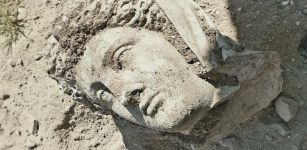 3rd-Century Statue Discovered In Ancient City Of Perge, Antalya, Turkey
Archaeology | Jul 28, 2020
3rd-Century Statue Discovered In Ancient City Of Perge, Antalya, Turkey
Archaeology | Jul 28, 2020 -
 Lake Huron Was Home To A 9,000-Year-Old Civilization – Underwater Structures And Artifacts Reveal
Archaeology | Jun 17, 2021
Lake Huron Was Home To A 9,000-Year-Old Civilization – Underwater Structures And Artifacts Reveal
Archaeology | Jun 17, 2021 -
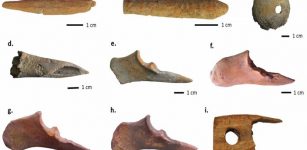 More Sophisticated Manufacturing In The Bronze Age – New Evidence
Archaeology | Jun 27, 2020
More Sophisticated Manufacturing In The Bronze Age – New Evidence
Archaeology | Jun 27, 2020 -
 Excavations of the Aşıklı Mound, Cappadocia , Turkey
Civilizations | Aug 22, 2015
Excavations of the Aşıklı Mound, Cappadocia , Turkey
Civilizations | Aug 22, 2015 -
 Unusual Carved Stone Pillar With ‘Special Powers’ Discovered In Canada Confirmed Authentic Indigenous Artifact
Archaeology | Jan 29, 2021
Unusual Carved Stone Pillar With ‘Special Powers’ Discovered In Canada Confirmed Authentic Indigenous Artifact
Archaeology | Jan 29, 2021 -
 Taharqa – The Most Powerful Of The Black Pharaohs
Featured Stories | Jan 29, 2016
Taharqa – The Most Powerful Of The Black Pharaohs
Featured Stories | Jan 29, 2016 -
 Tyrannical Tarquin The Proud: The Seventh And Last King Of Rome Was Banished
Featured Stories | Jan 28, 2020
Tyrannical Tarquin The Proud: The Seventh And Last King Of Rome Was Banished
Featured Stories | Jan 28, 2020 -
 Gengen Wer – Goose God Who Guarded The Celestial Egg Containing The Life Force In Egyptian Beliefs
Featured Stories | Apr 22, 2021
Gengen Wer – Goose God Who Guarded The Celestial Egg Containing The Life Force In Egyptian Beliefs
Featured Stories | Apr 22, 2021 -
 War Between Romans And Persians Lasted 721 Years: One Of The World’s Longest Human Conflicts In History
Featured Stories | Apr 18, 2022
War Between Romans And Persians Lasted 721 Years: One Of The World’s Longest Human Conflicts In History
Featured Stories | Apr 18, 2022 -
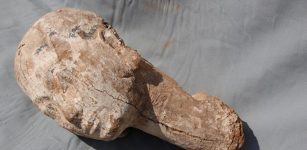 Ancient Wooden Sculpture Of Queen Ankhesenpepi II Discovered At Saqqara, Egypt
Archaeology | Oct 18, 2017
Ancient Wooden Sculpture Of Queen Ankhesenpepi II Discovered At Saqqara, Egypt
Archaeology | Oct 18, 2017 -
 Early, Complex Brain Surgery Performed In Ancient Greece
Archaeology | Apr 8, 2020
Early, Complex Brain Surgery Performed In Ancient Greece
Archaeology | Apr 8, 2020 -
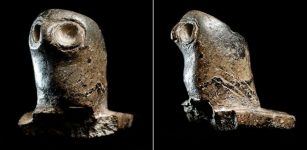 Enigmatic 2,000 -Years-Old Carved Stone Owl Pipes – An Ancient Unsolved Secret Of Illinois
Artifacts | Oct 4, 2018
Enigmatic 2,000 -Years-Old Carved Stone Owl Pipes – An Ancient Unsolved Secret Of Illinois
Artifacts | Oct 4, 2018 -
 Biblical Pool Of Siloam In The City of David To Be Excavated And Opened To The Public
Archaeology | Jan 2, 2023
Biblical Pool Of Siloam In The City of David To Be Excavated And Opened To The Public
Archaeology | Jan 2, 2023 -
 Varggrottan: Mysterious ‘Wolf Cave’ Was Home To Neanderthals 130,000 Years Ago – Oldest Human Dwelling In Scandinavia
Featured Stories | May 15, 2023
Varggrottan: Mysterious ‘Wolf Cave’ Was Home To Neanderthals 130,000 Years Ago – Oldest Human Dwelling In Scandinavia
Featured Stories | May 15, 2023 -
 Reconstruction Of Five-Story Patara Lighthouse Built By Roman Emperor Nero – Begins
Archaeology | May 30, 2019
Reconstruction Of Five-Story Patara Lighthouse Built By Roman Emperor Nero – Begins
Archaeology | May 30, 2019 -
 10,000-Year-Old Seeds Offer First Evidence Of Farming In A Green Sahara
Archaeology | Mar 19, 2018
10,000-Year-Old Seeds Offer First Evidence Of Farming In A Green Sahara
Archaeology | Mar 19, 2018 -
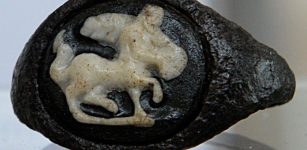 Roman Treasures Unearthed At Ancient Site Of Tiel, Netherlands
Archaeology | Apr 2, 2017
Roman Treasures Unearthed At Ancient Site Of Tiel, Netherlands
Archaeology | Apr 2, 2017 -
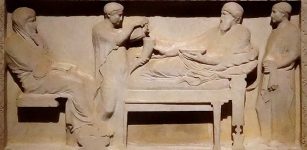 Who Were The Satraps Of The Achaemenid Empire?
Featured Stories | Aug 28, 2021
Who Were The Satraps Of The Achaemenid Empire?
Featured Stories | Aug 28, 2021 -
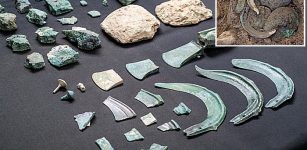 Unique 80 Bronze Age Artifacts Dated To Roman Campaign In The Alps In 15 BC – Discovered
Archaeology | Jul 3, 2023
Unique 80 Bronze Age Artifacts Dated To Roman Campaign In The Alps In 15 BC – Discovered
Archaeology | Jul 3, 2023 -
 Early Humans Were Probably Driven To Extinction By Climate Change- Study Suggests
Civilizations | Oct 15, 2020
Early Humans Were Probably Driven To Extinction By Climate Change- Study Suggests
Civilizations | Oct 15, 2020




